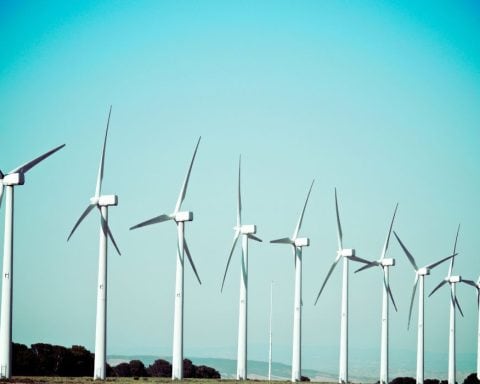The Inuit of Nunavut’s Kivalliq Region have big dreams for joining the clean economy via a 1,200-kilometre hydro and fibre optic line that would be the territory’s first infrastructure link to southern Canada.
The estimated $3-billion project has been years in the making, and under the aggressive timelines of the Inuit-owned Nukik Corporation, it could begin delivering clean, reliable, baseload electricity to five communities and several mines by 2030.
The challenges are formidable: a capital-intensive project that depends on uncertain electricity supply to be built over an environmentally sensitive landscape.
However, the benefits would be massive, says David Kakuktinniq, the president of both Nukik and parent company Sakku Investments Corp., the economic development arm of the Kivalliq Inuit Association.
The transmission line would greatly reduce five communities’ reliance on dirty and expensive diesel while bringing revenues to the Inuit corporations charged with economic development. It would also provide the reliable internet connection that is essential in a modern economy.
“This would open up the potential for economic activity in Nunavut,” Kakuktinniq tells Corporate Knights. The Inuit business leader spoke as he was returning to Rankin Inlet from Toronto, where he was prospecting for support from mining companies at the annual Prospectors & Development Association of Canada (PDAC) conference.
Providing clean reliable power “is the one thing that is most critical in terms of its economic value and what it would provide to the people in the North,” he says.
While the federal government has provided some support to date, the Kivalliq Inuit Association is urging Finance Minister Chrystia Freeland to allocate $426 million over several years in her budget (expected to be released on March 28) to ensure the project can proceed.
All told, the project proponents are looking for a $1-billion contribution from Ottawa but say that the money would be repaid within a decade from tax revenues generated from its construction and operation as well as increased mining.
The Canada Infrastructure Bank and private equity firms have committed some financing, but there remains a funding gap, which proponents are urging Freeland to address in her budget.
The Kivalliq hydro and fibre optic line falls into the category of a nation-building project that would tie Canada’s largest and most remote territory into the country’s economic fabric. Led by the Inuit themselves, the project represents an opportunity for true reconciliation with Indigenous people who are often forgotten by southern Canadians.
Nunavut hydro line to bring clean power to thousands
The transmission line and fibre optic cable would start in Gillam in northeastern Manitoba, running through boreal forest then over permafrost to the Hudson Bay communities of Arviat, Whale Cove, Rankin Inlet and Chesterfield Inlet before turning inland to Baker Lake. The total population of those five towns is approximately 15,000.
It would also service two Agnico Eagle gold mines and would support development of other proposed mines in the territory, Kakuktinniq says.
The Nunavut hydro line project would be rated at 150 megawatts of electricity transmission capacity and will have fibre optic bandwidth of 1,200 gigabits per second.
In a pre-budget submission, Nukik says the power from the transmission line would displace 138 million litres per year of diesel, which would dramatically reduce ship traffic in Hudson Bay. Ultimately, it would also spur the development of local renewable resources such as wind and hydro power, which would complement steady supply from Manitoba.
The federal government has supported similar projects to encourage remote and Indigenous communities to lessen their reliance on diesel, which is dirty and will be increasingly expensive as a warming climate threatens the utility of winter roads.
Ottawa and Ontario announced in 2018 that they would provide $1.6 billion to the Wataynikaneyap transmission project, which will deliver power to 17 communities across 1,800 kilometres in northwestern Ontario.
This would open up the potential for economic activity in Nunavut.
-David Kakuktinniq, president of both Nukik and Sakku Investments Corp.
Manitoba Hydro – which is proposed as the electricity supplier for the Kivalliq hydro line – is publicly unenthusiastic about the project with its northern neighbour.
“Manitoba Hydro does not have the long-term supply of power to meet the future needs of the communities and mines in Nunavut,” spokesman Bruce Owen said in an emailed statement. He noted that the Kivalliq project would account for nearly one-quarter of the 695-megawatt capacity from Manitoba Hydro’s recently completed Keeyask hydro project located on the Nelson River.
“We remain committed to exploring opportunities that are in the best interest of Manitobans and leveraging our clean and renewable hydropower for Manitoba’s domestic needs,” Owen said.
Manitoba is already a major electricity exporter and recently expanded its transmission capacity to the United States and Saskatchewan.
Kakuktinniq is unfazed by Manitoba Hydro’s comments, characterizing them as an “opening position.”
“It’s almost an expected response – you’re going to see some posturing,” he says, adding he hopes the tune will change when the Manitoba and federal governments become fully engaged in the discussions. “It’s not a problem without a solution.”





